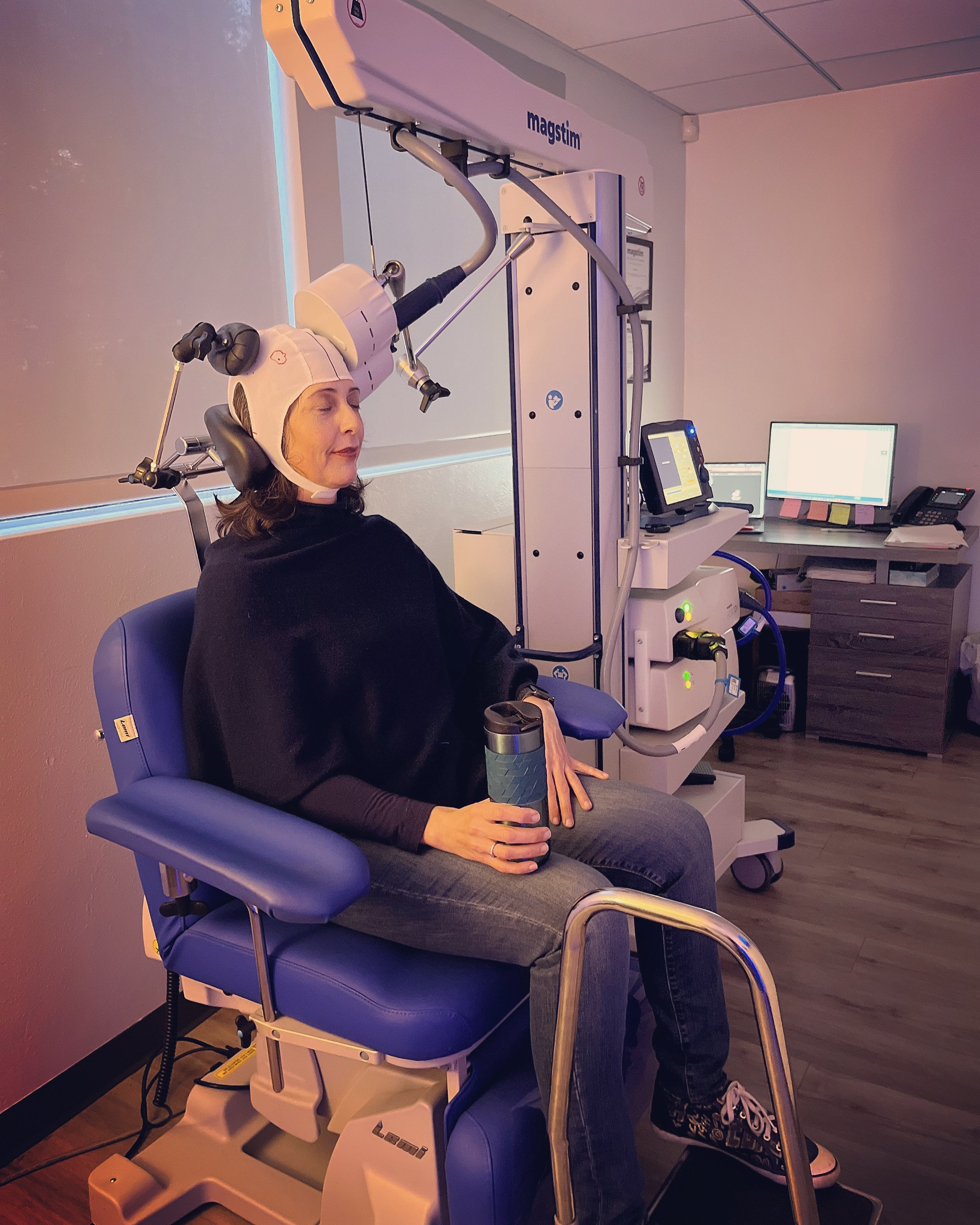How TMS Helped Me Feel Better Physically and Mentally
/By Madora Pennington, PNN Columnist
Chronic pain is often accompanied by depression. Many clinicians used to think that pain was caused by psychological distress, so they offered patients antidepressants with the attitude that their suffering was “all in their head.”
But now it is better understood that chronic pain can cause depression. Both conditions have a similar pathology and change the brain in similar ways. That is why treatments that work on depression (like antidepressants) may reduce the brain’s sensitivity to pain.
“Regardless of the cause of the pain, anxiety and depression increase the sensation of pain. Pain increases depression and anxiety, creating a vicious cycle. Breaking that cycle can help decrease pain,” says integrative physician and pain doctor Dr. Linda Bluestein.
I have Ehlers-Danlos Syndrome (EDS). Debilitating pain has been my companion since I was 14 years old. My body makes collagen that is not structurally sound. Because I am “loosely glued together,” I get injured easily because my joints are unstable and my body has a poor sense of where it actually is in relation to itself and the outside world. My thin and stretchy connective tissue sends pain signals to my brain, even when I am not injured.
It is probably not realistic for someone with Ehlers-Danlos to expect to have a life without pain, so I welcome medical treatments that might lessen my pain, even if they don’t eliminate it. My goal is to have pain that does not incapacitate me or ruin my life by taking all my attention. Thankfully, there are modalities that do this.
MADORA GETTING TREATMENT AT UCLA’S tms CLINIC
The last one I tried was transcranial magnetic stimulation (TMS), which stimulates the brain through a magnetic pulse which activates nerve cells and brain regions to improve mood.
TMS treatments are painless and entirely passive. The patient just sits there and lets the machine do the work. A magnetic stimulator rests against the head and pulses, which feels like tapping or gentle scratching.
TMS has been around for almost 40 years. The first TMS device was created in 1985 and the FDA approved it for major depression in 2008. Since then, its use has been expanded to include migraine, obsessive compulsive disorder, and smoking cessation.
While other medical procedures work on an injured body part, TMS targets the brain, where pain is processed. This helps the brain shift away from perceiving pain signals that are excessive and have become chronic.
“Many people are surprised to learn that stimulating the brain can help alleviate pain that is felt in an arm, leg or some other part of the body. We explain to patients that because pain is perceived in the brain, it is possible to reduce or sometimes even eliminate it by stimulating specific brain regions,” says Andrew Leucther, MD, a psychiatrist who heads UCLA’s TMS clinic, where I was treated. In addition to depression, the clinic also treats fibromyalgia, neuropathy, nerve injury, and many other causes of pain.
“Most patients are much less bothered by pain after treatment and report that they are functioning better in their work and personal lives,” Leucther told me.
Many insurers cover TMS for depression, but it is not generally covered for pain alone — although many doctors will add protocols for pain when treating depression. This is how I got my 36 sessions of TMS treatment, the usual number that insurance will cover and is thought to be effective.
Repetitive TMS stimulation to the primary motor cortex of the brain has robust support in published studies for the treatment of pain. It seems to work particularly well for migraines, peripheral neuropathic pain and fibromyalgia. Like all treatments, it may not work for everyone.
TMS practitioners recommend four or five sessions per week, gradually tapering off toward the end. My body is so sensitive, about three per week was all I could tolerate comfortably. The appointments lasted a brief 10 -15 minutes. A downside of the TMS machine is that it puts pressure against the head, which could be too much for Ehlers-Danlos patients who have uncontrolled head and neck instability.
TMS gave me relief in different ways than other methods have. One of the first things I noticed was less negativity and rumination. It was like getting a nagging, negative person out of the room -- or rather, my head. I felt less heartbroken over the major losses of my life, such as having spent so much of it totally disabled.
I also noticed a big difference in my PTSD triggers. I found myself shrugging off situations that normally would put me in a very uncomfortable, perturbed state. Keep in mind, I was getting TMS applied to various points on my scalp for pain, depression and anxiety.
Since having TMS, I notice that my body is less sensitive to touch. From spa treatments to medical procedures, it does not hurt as much to be poked at or pressed on. The extra comfort TMS had given me, both mentally and physically, is a lot for someone with medical problems like mine that are so difficult to treat.
Madora Pennington is the author of the blog LessFlexible.com about her life with Ehlers-Danlos Syndrome. She graduated from UC Berkeley with minors in Journalism and Disability Studies.




